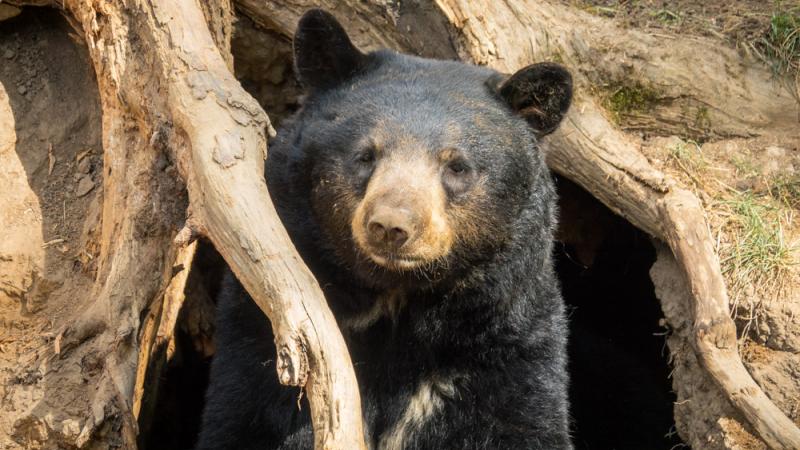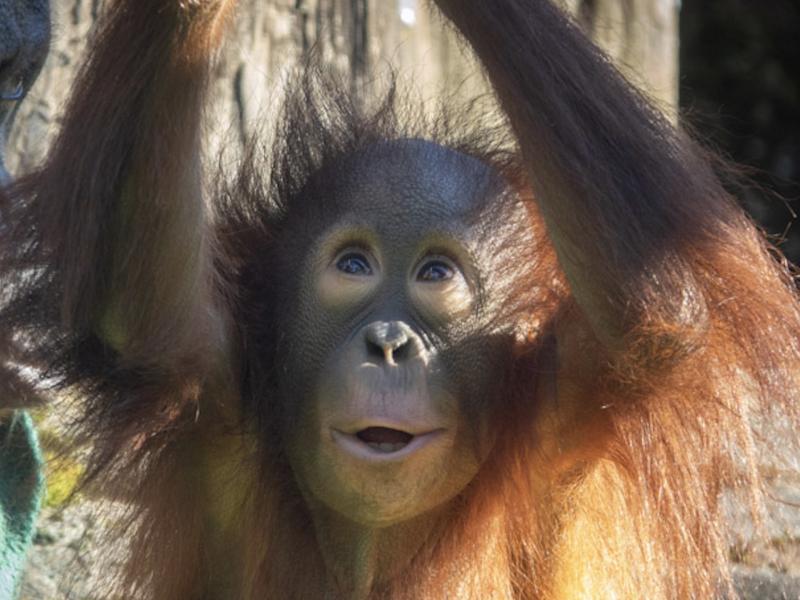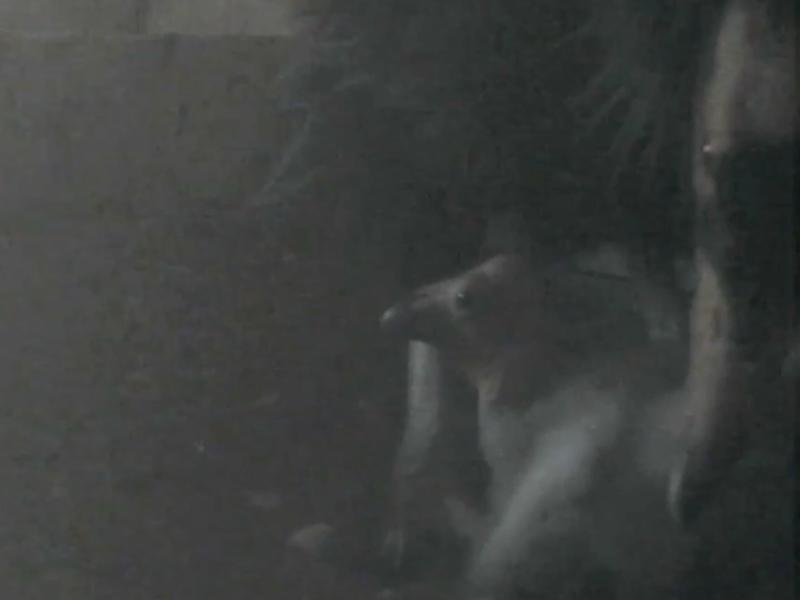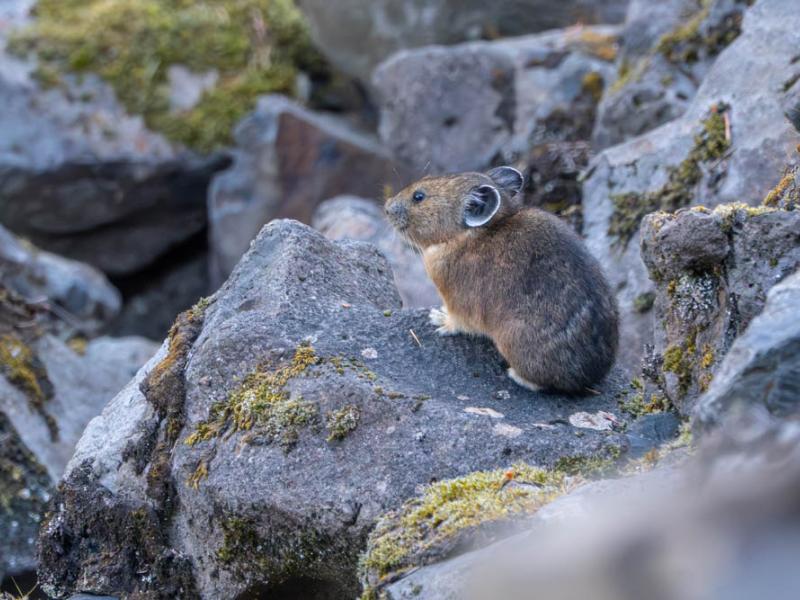Black bear Takoda is up a tree - a true harbinger of spring

Hibernation, torpor or just a long winter's nap? Whatever you call it, it's ending now!
At the Oregon Zoo, it's a sure a sign of spring.
This morning, as he has done each year since his arrival in 2010, Takoda the black bear wowed zoo visitors and staff by climbing a 50-foot Douglas fir tree in his habitat to feast on the tasty new growth near the top.
"To see a 400-pound bear so high up in one of these giant trees is breathtaking," said Amy Cutting, who oversees the zoo's Great Northwest area. "It's surprising to many visitors, but black bears are extraordinary natural climbers, and he does this every March or April with great confidence and skill."
Takoda, the youngest of the zoo's bears, climbs with less frequency now that he's no longer a cub, according to Cutting. But he hasn't missed a spring yet. Meanwhile, his older companions — Cubby, Tuff and Dale — wait below to catch whatever he drops while foraging.
"Tako's kind of a messy eater," Cutting said. "So the other bears get to enjoy the fresh spring fir needles too."
Across North America, from Canada to the northern half of Mexico and in at least 40 U.S. states, lethargic black bears are shaking off the sleep to sniff out the goods of spring.
"They go into torpor around mid-October through early spring," Cutting said. "They've just recently started playing more, and their hunger has increased."
Though most bears experience some form of winter slumber, many scientists refrain from calling it a true hibernation. Unlike bats, woodchucks or the notorious Arctic ground squirrel — which turns nearly frozen and whose brain cells shrink during dormancy — bears' body temperatures don't drop quite so low.
"Their metabolism only falls by half compared to the other mammals," said Stephanie Horner, director of the American Bear Association.
The reason for this, she explains, stems from the fact that bears' brains are much more alert throughout torpor.
"During a warm winter especially, bears wake up and move about the den," she said. "They may even leave in search of food. It's more like a long, broken nap."
With black bears particularly, nap length can vary geographically. In the north — where berries, plants and bug larvae die in winter weather — torpor may last around seven months. But where it's warm and food is abundant year-round, as in the southern United States, bears may bypass hibernation all together. Here in temperate Oregon, black bear torpor generally lasts five or six months.
To mirror natural conditions, the animal-care team at the zoo reduces the black bears' winter diets significantly, then ramps them back up for spring.
Black bears are North America's most common bear species — about 25,000 to 30,000 live in Oregon. They are omnivorous and have a diverse diet that varies dramatically with seasonal abundance and includes fruit, plants, berries, insects, roots, nuts and grasses; they are not usually active predators, but will scavenge on dead animals.
Once abundant in nearly all of North America's forested regions, black bears have lost much of their habitat and were extirpated from great swaths of their former range. But populations have been bouncing back over the past two decades: 60 percent of U.S. and Canadian states and provinces report growing numbers, according to the International Union for Conservation of Nature, which lists the bears' current population trend as "increasing."
More News

Jolene turns 2: Zoo to celebrate orangutan's 2nd birthday
The littlest member of the orangutan family is celebrating a big milestone this week: Jolene will turn 2 on Saturday.April 12, 2024

Seven chicks and counting: Zoo welcomes first condors of 2024
Seven fluffy chicks hatched last month at the Oregon Zoo’s Jonsson Center for Wildlife Conservation.April 5, 2024

Zoo seeks pika watchers for summer season
The zoo is recruiting volunteers to seek out one of the Columbia River Gorge’s fluffiest residents: the American pika.April 3, 2024

